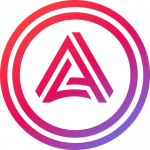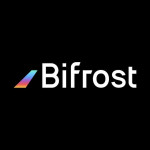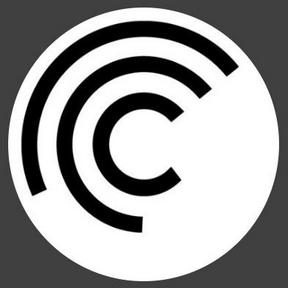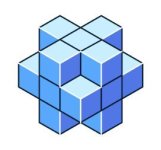Polkadot in Numbers - Monthly Report
State of the Network
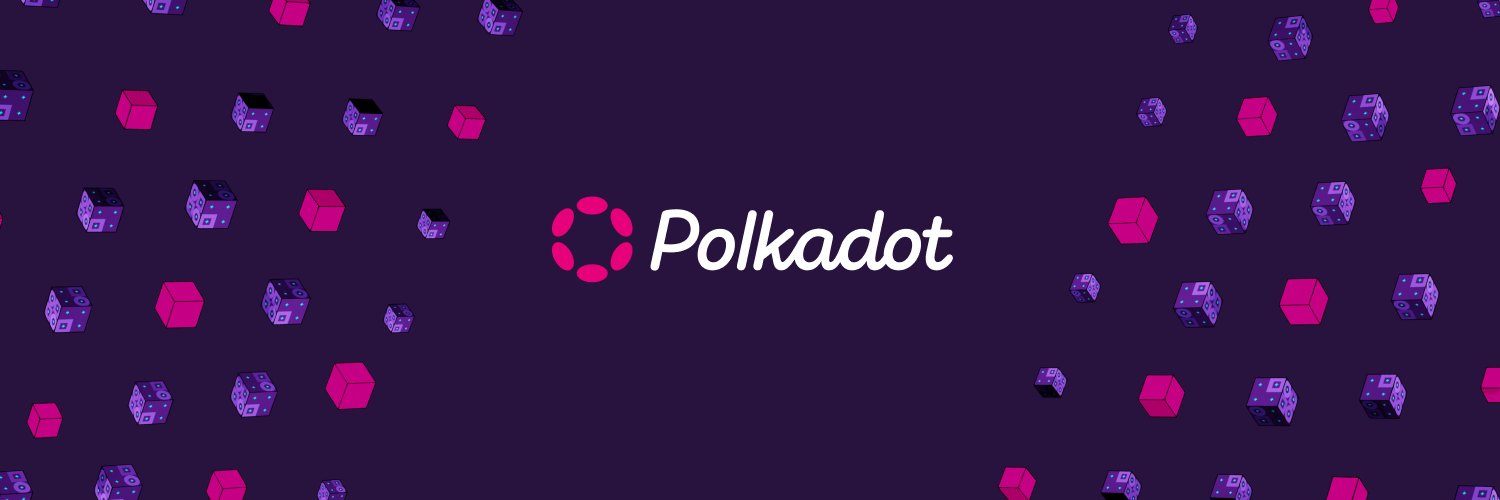
General Disclaimer
The following report is provided by the Parity Data Team for informational purposes only. All data is sourced from DotLake which gathers data directly from the distinct chains. It is important to clarify the following points:
- Not Investment Advice: The contents of this report, including all data, analyses, and opinions, are not intended to be, and should not be interpreted as, investment advice. This report does not recommend buying, selling, or holding any cryptocurrencies or digital assets, including Polkadot. The decision to engage in any investment activity related to cryptocurrencies should be made independently and with careful consideration of the risks involved.
- Accuracy and Reliability of Data: While the Parity Data Team has endeavored to ensure the accuracy and reliability of the information contained in this report, the data is provided “as is.” We do not guarantee its correctness, completeness, or suitability for any purpose. The team relies on sources believed to be reliable but does not independently verify all data and therefore cannot assure its accuracy or completeness.
- No Liability: The Parity Data Team, its affiliates, and contributors will not be liable for any direct, indirect, incidental, special, or consequential damages arising from the use of or reliance on information in this report. The readers should bear all risks associated with the use of this report and should conduct their own analysis and verification.
- Subject to Change: The information in this report is current as of the date of publication and is subject to change without notice. We have no obligation to update any content in this report.
- Intellectual Property: All content in this report is the intellectual property of the Parity Data Team. Reproduction or distribution of any part of this report without prior written permission is prohibited.
By accessing and using this report, you acknowledge that you have read, understood, and agree to be bound by these terms and conditions.
Contents
- 1. Introduction
- 2. What is Polkadot
- 3. Shared Security of the Network
- 4. Governance
- 5. Ecosystem - Parachains and System Chains
- 6. Polkadot Developer Community
- 7. Appendices and Resources
1. Introduction
As the Data Team at Parity Technologies, we're driven by the conviction that data is the cornerstone of meaningful advancements. It's through understanding data that we can unlock the full potential of the Polkadot ecosystem and demonstrate its value to the world. Our mission is to decode Polkadot's block data and ecosystem data, transforming them into valuable community insights.
Our journey began with the creation of a data warehouse (“Dotlake”) to first serve Parity's internal data needs. We've now broadened our scope, sharing our initiatives and learnings with the wider community. We plan to progressively make our datasets available to the public in 2024, alongside dashboards, metrics, code, and best practices we employed to ingest and decode Substrate data (Select * from Polkadot, Pieces of a decentralized data lake, etc.).
The heart of our solution is Dotlake, a scalable and cost-efficient data platform built on Google Cloud Platform (GCP). It's designed to store all blocks, events, extrinsics, and more for all the chains in the Polkadot ecosystem. We've utilized a range of existing technologies, keeping the architecture simple with low operational overhead. This includes tools like Terraform, the Substrate Sidecar, Rust & Python programming languages, and various GCP services like Cloud Storage, BigQuery, Cloud Run & Jobs, and Workflows & Functions.
Our approach allows us to process data from block number N to M, storing the raw results as JSON in Google Cloud Storage. This method not only provides a convenient abstraction, but also avoids the pitfalls of custom block parsing strategies in the ever-evolving Substrate Framework. The key to our platform's efficiency is our Block Compressor, which optimizes and reduces the data size significantly, making it more manageable for analytical purposes.
Dotlake currently consists of 70+ Polkadot & Kusama chains with their full history and is continuously expanding. The focus of this report is the Polkadot relay chain and its parachains.
Dotlake Batch
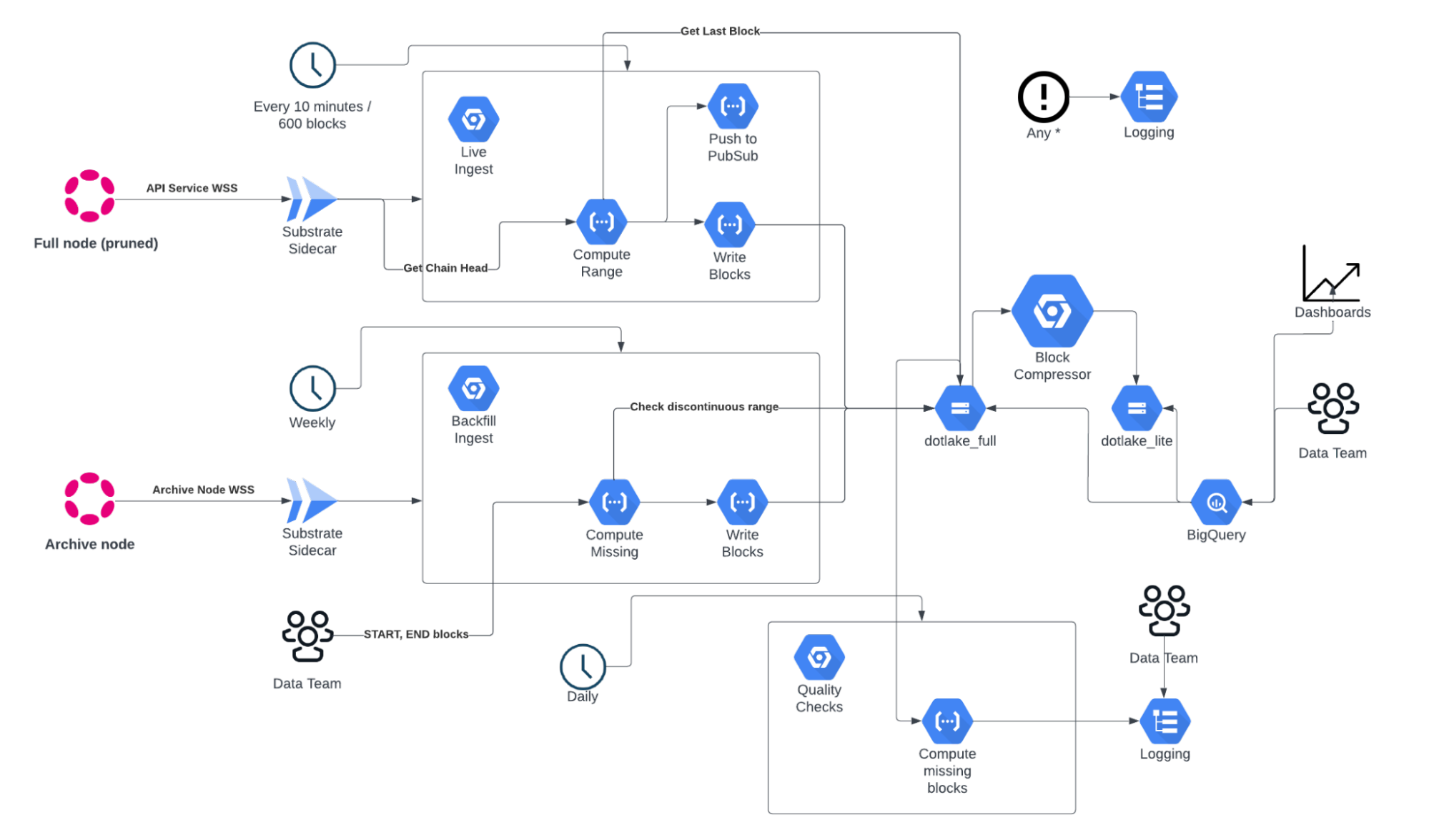
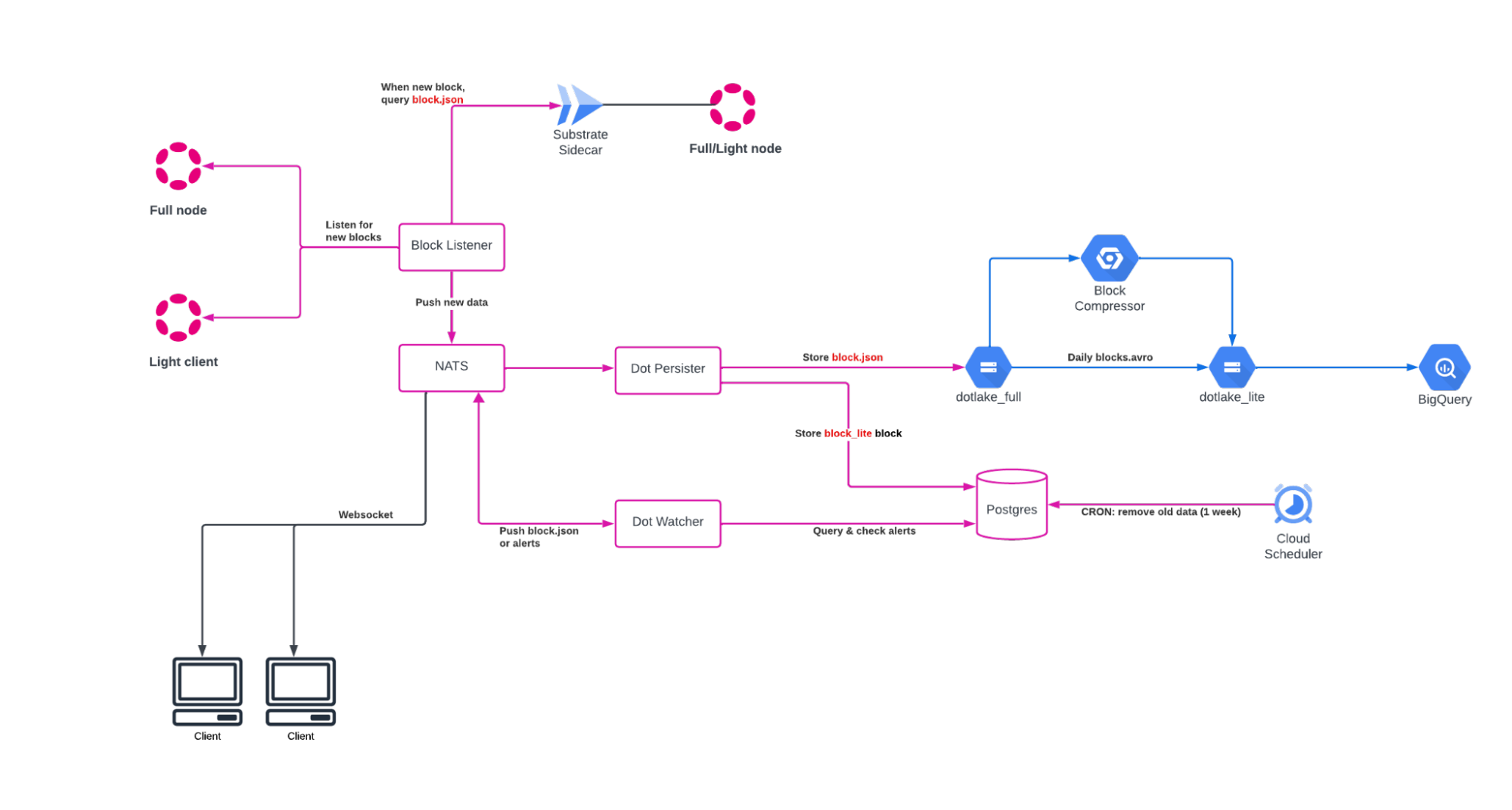
This report is an attempt to share some of the insights we have, by combining dashboards and metrics accompanied by lightweight wiki descriptions about each report area covered in order to educate our readers on key aspects of Polkadot.
If you're new to Polkadot, its design and architecture, we recommend starting with section 2 “What is Polkadot”, but if you're a veteran and have technical understanding, we suggest moving directly to the first graphs, in section 3 “Shared security of the network”.
All charts are produced in monthly increments or otherwise explicitly stated. Your feedback on this report as well as data and metrics you would like us to integrate in future iterations, would be very valuable. Please don't hesitate to reach out: data-team@parity.io.
2. What is Polkadot
2.1. The blockspace ecosystem for boundless innovation
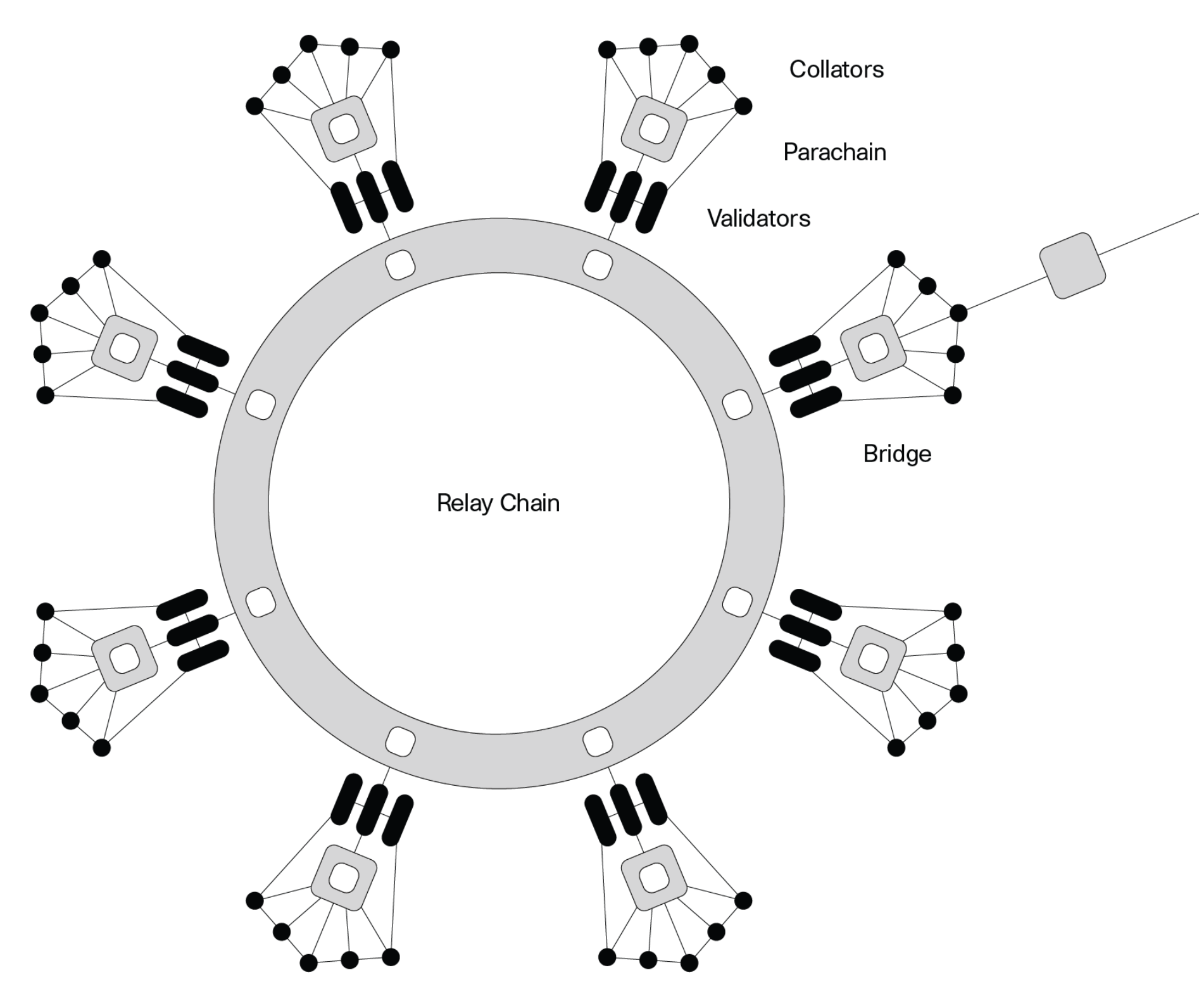
Polkadot is a heterogeneous multichain platform characterized by shared security and interoperability. It is designed to enable multiple blockchains to transfer messages, including value, in a trust-free fashion. Key components of its architecture include the Relay Chain, Parachains, and Bridges.
Relay Chain: The central chain of Polkadot, responsible for the network's shared security, consensus, and cross-chain interoperability. It is deliberately minimal in functionality (e.g., does not support smart contracts) and focuses on coordinating the system, including parachains.
Parachains - dedicated and on-demand: Polkadot facilitates a sharded network where transactions are processed in parallel. Parachains are application-specific layer-1 individual blockchains that connect to the Relay Chain, have their own tokens, and can be optimized for specific use cases. L1 chains attached to Polkadot benefit from its shared security model, including the Nominated-Proof-of-Stake (NPoS) mechanism, which provides out-of-the-box security without the need for individual chains to bootstrap their own. Parachains can have a dedicated slot procured by on-chain auction (current model), or operate on a more flexible on-demand basis, procuring Bulk or Instantaneous Coretime, trading blockspace, and utilising only specific amount of blockspace needed for individual block production (new model).
Cross-Consensus Messaging Format (XCM) - facilitates trust-free message passing between parachains, enhancing interoperability.
Bridges: These enable connections between Polkadot and external blockchains (like Ethereum), allowing for the transfer of data and tokens.
The technology stack of Polkadot includes:
- - Polkadot Runtime: The core state transition logic, upgradable without a hard fork.
- - Polkadot Host: The environment executing the runtime, involving components like networking (Libp2p), state storage, consensus engines (GRANDPA and BABE), Wasm interpreter, and low-level blockchain primitives.
- - WebAssembly (Wasm): Used as the compilation target for the runtime, ensuring platform-agnostic and efficient execution.
Key features include:
- - Forkless Upgrades: Enabled by storing the runtime on-chain and using Wasm, Polkadot can upgrade without hard forks.
- - Consensus Mechanisms: It employs Nominated Proof-of-Stake (NPoS), hybrid consensus (combining BABE for block production and GRANDPA for finality), and BEEFY for bridging with non-Polkadot networks.
Stakeholders in the Polkadot ecosystem include Validators (block producers on the Relay Chain), Nominators (stake bonders supporting validators), and Collators (maintaining parachains and providing proofs to validators).
2.2. Ubiquitous computing engine
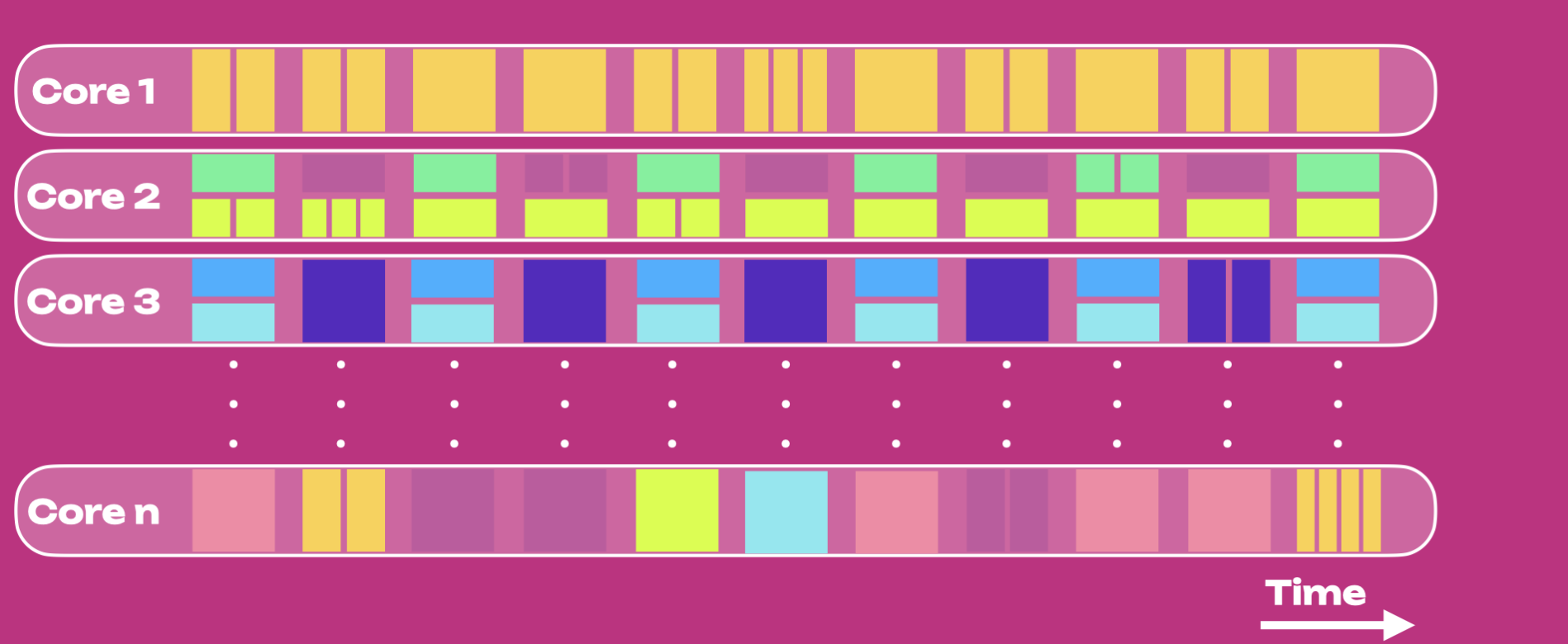
Based on Gavin Wood's talk at Polkadot Decoded 2023, the direction of Polkadot 1.0 illuminates a shift towards more abstract and generalized blockchain functionality, moving beyond the original concepts in its whitepaper.
Polkadot as a Computational Resource
Polkadot is a platform for building applications using underlying resources called Blockspace. It provides a resilient general-purpose continuation computation and operates like a multicore computer with chains called parachains operating in parallel. It is not just a platform for hosting chains but for people to use those applications.
Polkadot is transitioning from a chain-centric ecosystem, where each parachain owned a dedicated execution core, to an application-centric model, where cores are shared resources. The previous model used slot auctions for securing parachain slots, but with the shift towards a coretime marketplace, applications can now purchase or reserve coretime on demand, significantly lowering entry barriers for developers.
The new model introduces agile core usage and coretime allocation, ensuring efficient utilization of Polkadot's computation and blockspace according to application needs, without waste. "Accords" are set to improve cross-chain communication and security of XCM messages. Furthermore, Polkadot plans to increase its scalability by offloading on-chain logic to system parachains, thus freeing up more bandwidth for parachain protocols and accords.
The coretime marketplace represents a departure from traditional slot auctions, treating coretime as a tradeable tokenized commodity. Applications can opt for bulk or instantaneous coretime rental, with options to standardize the rental through a broker system or purchase immediate use at a spot price.
Polkadot's shift towards application-centricity focuses on leveraging the collaborative potential of different chains to build applications that operate across chains, addressing real-world problems. The relay-chain will concentrate on its primary tasks of security and message passing, while system parachains will assume secondary tasks, creating a more streamlined and efficient ecosystem.
Polkadot is perfecting its implementation through RFCs to continue being a decentralized, secure, ubiquitous computing engine to power the next generation of Web3 applications.
Polkadot: Staking Rate
Source: DotLake
Polkadot: Nominators & Validators
Source: DotLake
Understanding Polkadot's Nakamoto Coefficient
The Nakamoto Coefficient in blockchain networks typically refers to the minimum number of entities required to control a significant portion of the network, often leading to consensus failures. For PoS blockchains, this threshold is tied to the control of over 33% of the total stake. However, Polkadot's equal voting power among validators changes this dynamic.
For example, a Nakamoto Coefficient of 93, means that the top 93 validators hold one third of total stake, therefore signifying that 93 entities would need to collude to control the network. Polkadot's high nakamoto coefficient is testament to its robust decentralization.
Polkadot: Nakamoto Coefficient
Source: DotLake
Furthermore, the minimal difference in stake percentages between the highest and lowest staked active validators further underscores this balance.
Polkadot: Min and Max Validator Stakes
Source: DotLake
4. Governance
4.1. Gov 1 - the first iteration of Polkadot Governance
Polkadot initially implemented an innovative decentralized governance system that featured a tri-cameral structure: a technocratic committee for upgrade timelines, an elected executive body that initiated legislation to manage parameters, administration, and spending, and a general voting system that favored long-term stakeholders. Somewhat inspired by parliamentary democracy, this system functioned effectively for 2–3 years, efficiently managing treasury funds and implementing upgrades and critical fixes.
However, there were challenges. The centralization and lack of anonymity in the executive council (the Council) posed risks to the protocol and its members, who could be pressured into biased decisions. The Technical Committee faced similar issues of centralization and vulnerability. In a society where decentralization is increasingly vital for safety and security, these aspects were concerning.
Another limitation was the singular, all-encompassing referendum model, curtailing the decision throughput by restricting the number of proposals that could be considered simultaneously and leading to prolonged voting periods. This system favored in-depth consideration of a few proposals over a broader range of many, inadvertently curtailing the potential of collective decision-making.
The governance model also had inherent exclusivity due to high barriers to entry, impacting diversity and inclusivity, and ultimately affecting turnout and legitimacy.
Although the original model was considered advanced in the Web3 space, by acknowledging that this first version was a starting point, improvements and iterations were always anticipated. As a result, a new model was designed and launched, set to advance Polkadot's governance, addressing these issues and evolving the ecosystem's decision-making process even further.
4.2. Introducing OpenGov
OpenGov, the advanced governance system for Polkadot, aims to address the shortcomings of the previous model. It retains core principles like the 50% stake rule for decision-making and Conviction Voting, which gives more weight to long-term stakeholders. However, it simplifies governance by removing separate bodies like the Council and Technical Committee, and does away with alternating proposal timetables and public queues. The focus is on referenda as the primary decision-making tool, allowing numerous simultaneous referenda for more agile and inclusive governance.
This system enables anyone to initiate or vote on referenda anytime, potentially leading to numerous concurrent votes. To manage this, Polkadot OpenGov introduces unique features for referendum management, including various 'Origins' and 'Tracks' to categorize referenda based on their complexity and potential impact. More significant decisions require stricter safeguards and longer consideration periods, while less critical ones have simpler processes.
Key differences to Governance V1
- Simplification and Decentralization: OpenGov eliminates the Council and Technical Committee, creating a simpler structure with only the Public (token holders) and the Technical Fellowship involved. This approach ensures a more decentralized governance model.
- Multiple Origins and Tracks: In OpenGov, referenda are executed from multiple origins, each with a different track. This allows for categorizing proposals based on their importance and urgency, enabling simultaneous execution within and between origin tracks.
- Public Proposal Submission: Unlike Governance V1, where proposals could be submitted by the Council or the Public, in OpenGov, all proposals are submitted by the public, enhancing the democratic nature of the system.
- Origin-Specific Approval and Support Curves: OpenGov uses origin-specific approval and support curves, determining the amount of approval and support needed over time. This system replaces the Adaptive Quorum Biasing used in V1, leading to a more equalitarian and time-responsive approval process.
- Flexible Voting and Enactment Periods: OpenGov allows multiple referenda to be voted on simultaneously, with customizable periods for voting and enactment based on the origin's importance and urgency.
- Cancellation and Blacklisting: OpenGov introduces a special operation for canceling ongoing referenda, allowing immediate rejection of proposals, with a provision for slashing the deposit if the proposal is malicious or spam. This cancellation operation comes with its own Origin and Track, designed for urgent execution.
- Improved Voting Options: Voters in OpenGov can choose to abstain or split votes, in addition to the traditional aye or nay options, offering more engagement in the voting process.
- Agile Multirole Delegations: Voters can delegate votes to different accounts depending on origins, allowing more tailored and expertise-based delegations.
- Polkadot Fellowship and Whitelisting: Polkadot Fellowship, a more decentralized entity than the Technical Committee, can whitelist proposals, enabling them to have shorter lead-in, confirmation, and enactment periods. This process ensures a quicker response for urgent and critical proposals.
OpenGov was launched on Kusama, Polkadot's "canary" network, in November 2022. After six months of operating on the canary-network Kusama, it went live on the Polkadot on June 15, 2023. This new governance model significantly enhances Polkadot's decentralization by enabling the community to have more direct control over decision-making processes.
4.3. Polkadot 1.0 - completion of Polkadot Whitepaper and handover to community
In July 2023, the first runtime was released under the Polkadot Technical Fellowship as an independent collective - v1.0. This version fully realized the groundbreaking vision outlined in the 2016 Polkadot whitepaper, which proposed a scalable, heterogeneous multi-chain network. Key features include heterogeneous sharding, advanced staking, on-chain governance, cross-chain communication, and forkless upgrades.
The journey to Polkadot 1.0 involved significant advancements in blockspace management, transaction efficiency, and scalability, addressing the blockchain trilemma and enhancing the developer experience.
Polkadot 1.0 also introduced “Long Term Support” (LTS) releases, ensuring critical security fixes for parachains without the need to upgrade to newer versions with breaking changes. The LTS releases are maintained for 6 months, providing enterprises and users with prioritized stability and a secure parachain codebase.
With the 1.0 release, all runtime code has been transitioned to a repository managed by the Technical Fellowship, which marked a full handover to the community, fostering greater decentralization, transparency and collaboration.
Future development will focus on community-driven discussions and consensus, potentially introducing new allocation mechanisms and 'accords' between blockchains. Polkadot's continuous innovation emphasizes interoperability, scalability, and upgradeability.
The Polkadot Treasury
Consistent across both Governance V1 and OpenGov implementations has been the role of the Polkadot Treasury.
Polkadot: Treasury balance
Source: DotLake
Inflows to and Outflows from the Treasury account come in several different forms. In terms of DOT flowing from the Treasury to the Polkadot Ecosystem, Bounties (including Child Bounties) and Proposals are the most prolific funding mechanisms.
The majority of DOT that flows to the Treasury is its share of network inflation which arises from the deviation between the actual staking rate and the ideal staking rate. Other sources of Treasury income come from network transaction fees and miscellaneous transfers to the Treasury from other wallets.
Polkadot: Treasury flows
Source: DotLake
Number of Referenda by Outcome
Open Gov was implemented in mid-June of 2023 (deployed on Polkadot runtime / approved to be included by the community), marking the transition from Gov 1, used in the first half of the year. The below pie chart displays data since the launch of Open Gov (mid-June 2023) until now.
OpenGov: Number of referenda by outcome
Source: DotLake
Number of referenda by Origin
Source: DotLake
Number of Votes by Duration of Lock (Open Gov)
Conviction voting in Polkadot allows participants to boost their voting power by voluntarily locking their tokens for a specified period. The longer the lock period, the greater their vote's influence, enabling a weighted voting mechanism that reflects both the amount of stake and the commitment duration of the voter's support for specific proposals. Read more about vote multipliers and lenghts of lock here. This pie chart shows the all-time popularity of conviction locks in Open Gov (from mid-June 2023 until now).
Number of votes by Duration of lock
Source: DotLake
Monthly Participation (Open Gov)
Participation is the number of non-distinct addresses multiplied by the number of referenda voted on for a given month.
OpenGov Monthly Participation
Source: DotLake
Monthly Number of Voters (Open Gov)
The number of voters is the number of distinct addresses that noted on one or move referenda during a given month.
OpenGov Number of monthly voters
Source: DotLake
Monthly Voting Power by Type (Open Gov)
OpenGov Monthly capital by type (no conviction)
Source: DotLake
OpenGov Monthly voting power by type (w/ conviction)
Source: DotLake
Monthly Voting Power by Direction (Open Gov)
Monthly Tokens voted by Direction (no conviction)
Source: DotLake
Monthly Tokens voted by Direction (with conviction)
Source: DotLake
5. Ecosystem - Parachains and System Chains
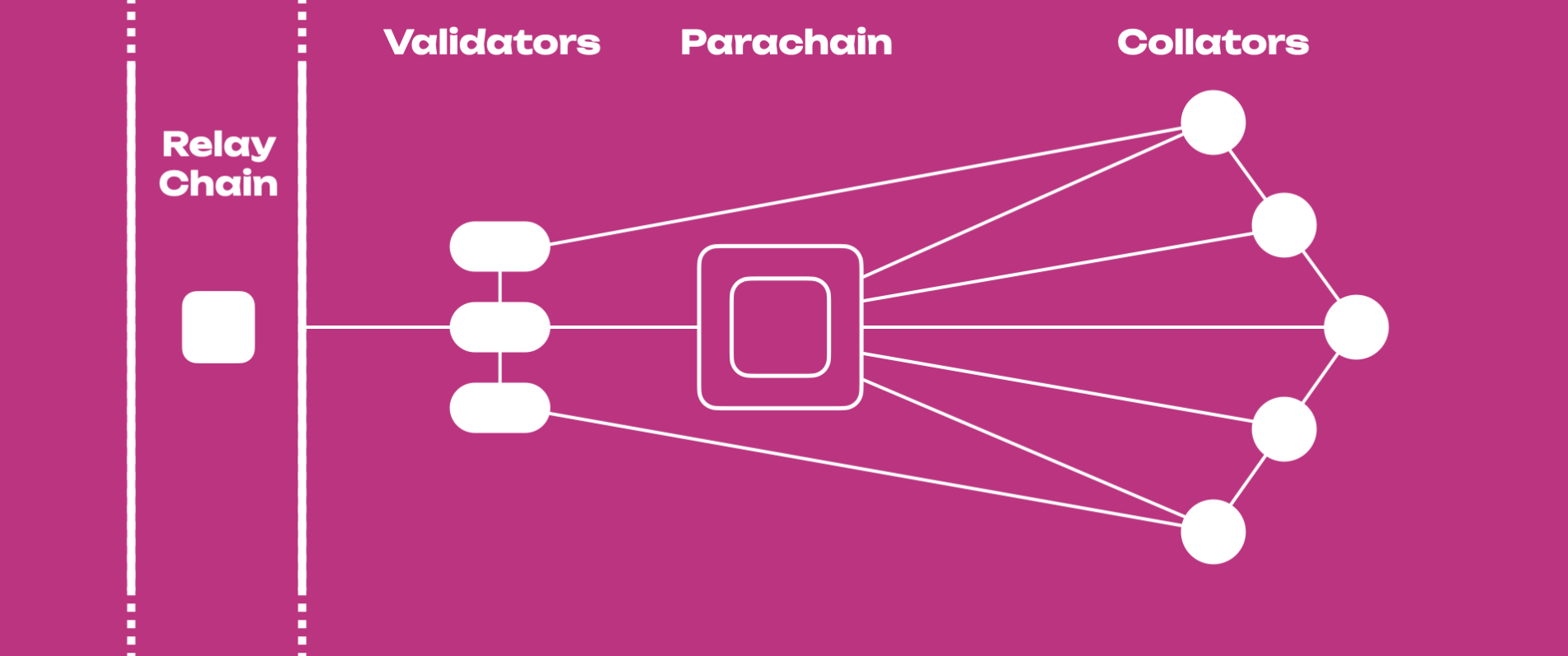
5.1. Parachains
Polkadot parachains are specialized blockchains that integrate with the Polkadot network, each designed for specific use cases. They offer solutions to the scalability and flexibility challenges in blockchain technology by allowing multiple blockchains to operate independently yet securely, leveraging the shared security provided by the Polkadot Relay Chain. This shared security is a significant value proposition for chains becoming parachains, as it allows them to tap into the economic security of the Relay Chain without the need to maintain their own validator set, which is a crucial distinction from independent chains connected by bridges.
Parachains can have their own economies and native tokens, but they are not required to. They function using schemes like Proof-of-Stake to select validators, although they rely on the Relay Chain for validation and finalization. Transaction fees and other economic models can be implemented at the discretion of each parachain.
Overall, the true potential of parachains is vast, with use cases ranging from encrypted consortium chains and high-frequency chains to privacy chains and smart contract chains. They represent a significant component of Polkadot's architecture, designed to enhance the scalability, interoperability, and flexibility of the network.
5.2. System Parachains
System chains, also known as "System Parachains," are specialized parachains that host key network functionalities. They are governed by the network rather than individual governance systems, ensuring that essential services and features are maintained efficiently and securely for the benefit of the entire Polkadot ecosystem.
Core Protocol Features: System parachains contain essential elements of the Polkadot protocol, but unlike standard parachains, they are not acquired through auctions. Instead, their execution cores are allocated by network governance. This setup allows Polkadot to utilize its parallel execution capability for hosting core protocol logic, improving scalability and efficiency.
Evolution of Terminology: Previously known as "Common Good Parachains," the term has evolved to "System Parachains" for clarity. This change reflects their role in the network and their management by on-chain governance mechanisms, rather than having separate native tokens or governance systems.
Existing System Parachains:
- Asset Hub: This parachain acts as an asset portal for tracking and managing the issuance of assets, including reserve-backed stablecoins and non-fungible tokens (NFTs). It offers efficient transaction processing with significantly lower fees compared to the Relay Chain.
- Encointer: A blockchain platform for self-sovereign ID and universal basic income, Encointer focuses on financial inclusivity and mitigates Sybil attacks using a Proof of Personhood system. It allows groups to create and manage their digital community tokens.
- Collectives: This parachain hosts on-chain collectives that contribute to network stewardship and decentralized governance, allowing networks to express legislative opinions within other networks.
- Bridge Hubs: Dedicated to creating bridges between networks, Bridge Hubs facilitate trust-minimized bridges to other networks, enhancing interoperability and network integration.
Polkadot Relay & Parachains: A Few Numbers
The below graph shows the evolution of the number of parachains secured by the Polkadot Relay Chain over the past 12 months.
Polkadot: Number of parachains
Source: DotLake
We can achieve a 'birdseye' view of the ecosystem by looking at a few common metrics across the Polkadot Relay and Parachains.
Transactions
The Polkadot Relay and Parachains fee paying transactions over the past 12 months. The number of fee-paying and signed extrinsics along with the number of 'ethereum.executed' and 'evm.executed' events were taken into account to include both substrate native as well as EVM transactions.
Polkadot: Monthly transactions by Parachain and Relay Chain
Source: DotLake
Unique Addresses
The below graph shows the number of ss58 wallet addresses on each chain that had a non-zero balance from the `system.accounts` storage function.
Polkadot: Unique addresses
Source: DotLake
Active Addresses
Active addresses are defined as one that signs a successful extrinsic (substrate transaction) or is the sender of an ethereum.executed` or `evm.executed` event (EVM transaction).
Polkadot: Active addresses
Source: DotLake
Interoperability: XCM
See the transport methods here for Cross-Consensus Message Format (XCM).
XCM: Messages Sent Monthly by Type
Source: DotLake
In order to understand the transport paths of XCM messages, the `xcmpqueue.XcmpMessageSent` event was used to identify HRMP messages sent, the `dmpqueue.ExecutedDownward` event to signal the receipt of Downward Message Passing (Relay Chain -> Parachain) and the `parachainsystem.UpwardMessageSent / ExecutedUpward` events to denote the sending of Upward Message Passing (Parachain -> Relay Chain).
XCM: Number of distinct HRMP Channels
Source: DotLake
XCM: Parachain Message Usage per Month (HRMP Senders)
Source: DotLake
6. Polkadot Developer Community
6.1. Developers
Polkadot's developer community is a prominent force in the blockchain space, standing out for its strength and active engagement. According to Electric Capital, Polkadot is one of the leading development ecosystems in the blockchain world, continuously ranked second only to Ethereum.
Polkadot reached 500 full-time developers (developers that contributed code 10+ days out of a month) in just 3.6 years since network launch, the fastest growth rate of any blockchain ecosystem. This recognition is a testament to the diligent contributions made within the ecosystem and the significant number of developers actively involved in it.
The Polkadot Blockchain Academy (PBA) offers a unique educational experience focused on blockchain technology, using Polkadot and Substrate as its foundations. The program, designed for both developers and Polkadot project founders, is led by experts from the Polkadot ecosystem, Parity Technologies, and the Web3 Foundation. The curriculum includes theoretical modules on economics, governance, game theory, cryptography, and practical applications in Polkadot-specific technologies. The Academy aims to equip participants with the knowledge and skills to build blockchains and contribute significantly to the Polkadot ecosystem. It welcomes both new and experienced individuals passionate about Web3 and blockchain technology.
As of September 2023, PBA has made its course materials publicly available after a year of development and refinement. This initiative is part of their continuous effort to enhance the curriculum and learning experience, aimed at equipping builders with essential skills for thriving in the Polkadot ecosystem.
The Polkadot Developer Heroes Program is a community-focused initiative for developers who are actively engaged in the Polkadot ecosystem. It is open to developers of all levels who contribute technically, participate in discussions, and create technical content related to Polkadot. The program offers various benefits, including dedicated educational space, exclusive content, mentoring sessions, networking activities, career opportunities, and more. It aims to connect, grow, and inspire the Polkadot developer community, providing a platform for knowledge sharing and professional development. It includes two categories: Rookies (beginners in Polkadot development) and Heroes (advocates for Polkadot technology). Activities include mentoring, contributing to the Polkadot stack, content creation, and speaking at events. Interested participants can sign up and nominate themselves for the program.
Substrate Stack Exchange
The Polkadot community fosters knowledge sharing between developers through the use of a Polkadot & Substrate Stack Exchange forum found here. The forum is a key resource for asking and answering questions related to Substrate and the broader Polkadot ecosystem. It is a place for developers to engage with the community and participate in valued discussions on a wide range of topics. From new developers to founders of parachain projects and Polkadot core engineers, it is a powerful community-driven resource that enables collaboration and serves as a pivotal knowledge hub for the ecosystem.
Topics ranged from pallet-contracts, wasm, XCM, runtime, ink, polkadot.js to more general questions about governance, parachains, staking, on-chain data and other aspects of core Polkadot technology.
StackExchange: Weekly User Growth
Source: DotLake
Top 25 Tags
Over time we have witnessed specific topics raising interest on Stack Exchange as developers seek to engage with the latest developments. The below pie chart displays the top tags from the beginning of 2023 until now.
StackExchange: Top 25 tags
Source: DotLake
User Activity
StackExchange: Weekly Activity
Source: DotLake
7. Appendices and Resources
7.1. Polkadot Parachains
Parachain | Category | Applications |
De-Fi | Acala is the all-in-one DeFi and liquidity hub of Polkadot. It’s an Ethereum-compatible platform for financial applications to use smart contracts or built-in protocols with out-of-the-box cross-chain capabilities and robust security. | |
Gaming; NFT; Scaling | Incentive layer that allows game developers to integrate blockchain technology into Unreal and Unity games, enabling secure and scalable decentralized gaming with tokenized virtual goods. | |
Smart Contracts | Astar Network, Japan's leading blockchain, supports EVM, Substrate, WebAssembly (Wasm), and ink! environments, offering a scalable, cross-layer & cross-machine protocol for the development of multichain smart contracts, with its unique Build2Earn mechanism empowering developers to earn incentives. | |
DAO; Bridge; NFT | Scalability of a permissioned network along with the security and interoperability of public blockchains, targeting businesses with a range of use cases like NFTs, gaming, loyalty, and supply chain, and fostering accessibility to blockchain technology. | |
DeFi; Smart Contracts | Bifrost Finance on Polkadot is a decentralized, non-custodial cross-chain finance platform that focuses on staking liquidity through its unique protocols, allowing users to earn rewards and maintain liquidity for staked assets like DOT and KSM, while also facilitating cross-chain asset swaps and other DeFi functionalities. | |
DeFi; Smart Contracts; Sustainability | Eco-friendly blockchain platform designed for NGOs and ESG-focused organizations, facilitating investments in sustainable markets through its green DeFi platform, including the purchase of tokenized carbon credits. | |
DeFi; RWA | Centrifuge parachain is engineered for decentralized finance of real-world assets, streamlining transactions between borrowers and lenders, and facilitating the tokenization and securitization of various assets to democratize finance for SMEs. | |
DeFi | Parachain that aims to simplify blockchain infrastructure for developers, offering a foundational layer for cross-chain compatibility and efficient on-chain trading services between different chains. | |
DeFi; Smart Contracts | Composable Finance's parachain enables interoperability among diverse blockchain networks by running multiple bytecode types, facilitating the integration and communication of various smart contract languages and enhancing cross-chain functionalities. | |
Data | Crust Network is a decentralized storage platform on Polkadot, leveraging TEE, MPoW, and GPoS to offer secure and efficient decentralized storage for applications like website hosting, NFT storage, and P2P content distribution, serving as a user-friendly alternative to traditional cloud services. | |
DeFi; Bridge; NFT; Gaming; DAO | Darwinia Network offers a programmable cross-chain messaging infrastructure for the Polkadot ecosystem, enhancing interoperability and smart contract functionality for applications like DeFi and gaming, with faster transactions and lower costs than Ethereum. | |
DeFi | Equilibrium is a DeFi parachain that combines a money market and an orderbook-based DEX, enabling high-leverage trading and borrowing of digital assets with its native EQ token used for communal governance. | |
Data; Identity; Privacy; SocialFi | Frequency is a Polkadot parachain designed to enable scalable, decentralized social media functionality, bridging the gap between Web3 and traditional social media platforms by accommodating high volumes of social interactions like messages and posts at Web2 scale. | |
DeFi | Hashed Network, a parachain in the Polkadot ecosystem, orchestrates native Bitcoin Core standards like PSBTs, Schnorr signatures, and Tapscript. It uses Substrate to ensure secure address generation, verified addresses, spending policies, and security, especially in proof-of-reserves reporting for each vault. | |
DeFi | HydraDX is a next-generation DeFi protocol on Polkadot, featuring the HydraDX Omnipool, an innovative Automated Market Maker (AMM) that consolidates all assets into a single trading pool for unparalleled efficiency in liquidity provision. | |
DeFi | Interlay is a decentralized network focusing on bridging Bitcoin to DeFi platforms like Polkadot and Ethereum, enabling secure and efficient interaction of cryptocurrencies across various blockchains. | |
DAO; NFT; Governance | InvArch Network is a blockchain and service parachain in the Polkadot ecosystem, providing a dynamic multisig solution called Saturn to serve the entire ecosystem and enable efficient IP management, utility, and authentication across multiple blockchains. | |
Data; Identity; Privacy | KILT Protocol is a blockchain-based identity platform on Polkadot, enabling the creation of decentralized identifiers (DIDs) and verifiable credentials, focused on providing secure identity solutions for both individuals and enterprises. | |
Data; Identity; Privacy | Litentry is a Web3.0 identity aggregation protocol on Polkadot that enables cross-chain credit computations, empowering users with control over their digital identities and facilitating interoperability and privacy in the decentralized ecosystem. | |
DeFi; Privacy; Smart Contracts | Manta Network is a privacy-focused parachain in the Polkadot ecosystem, utilizing advanced cryptographic techniques like zk-SNARKs to ensure end-to-end privacy for blockchain applications, thereby enhancing interoperability and ease of use across various platforms. | |
Smart Contracts | Moonbeam is a highly Ethereum-compatible smart contract parachain in the Polkadot ecosystem, enabling developers to seamlessly port projects and dapps with minimal code changes, thus connecting Polkadot's assets and capabilities with Ethereum's developer ecosystem. | |
Gaming; NFT | Moonsama is an EVM-compatible Polkadot parachain designed to support a diverse range of games, NFTs, tokens, and applications, providing a decentralized and interoperable platform for the Moonsama ecosystem. | |
Data; IOT; Privacy; Scaling | Nodle is a decentralized wireless network parachain on Polkadot, using Bluetooth Low Energy via smartphones and routers to connect IoT devices to the Internet at low cost, while maintaining privacy and security, especially for enterprises and smart cities. | |
Data; Knowledge Graph | OriginTrail is a decentralized knowledge graph parachain on Polkadot, designed to organize, discover, and verify the world's most important assets, enhancing their value and accessibility in various sectors like supply chain, healthcare, and scientific research. | |
DeFi | Parallel Finance is a DeFi super DApp protocol in the Polkadot ecosystem, aiming to bring decentralized finance to a broader audience by building a decentralized future that enhances DeFi accessibility, capital efficiency, and security. | |
DeFi | Pendulum is a parachain that integrates DeFi applications with the foreign exchange market, allowing for the creation of Automated Market Makers (AMMs) for fiat currencies and scalable liquidity pools, fostering yield earning opportunities and a decentralized future for fiat tokens. | |
Data; Privacy | Phala Network is a privacy-preserving cloud computing service in the Polkadot ecosystem, leveraging the TEE-Blockchain Hybrid Architecture to offer secure and trustless computing while enabling confidential smart contracts and data protection. | |
DeFi; Exchange; Bridge | Polkadex is a decentralized peer-to-peer trading platform that merges the benefits of both centralized and decentralized exchanges into a single ecosystem, featuring high transaction throughput and low latency to facilitate efficient and trustless trading on the Polkadot network. | |
SocialFi | Subsocial is a decentralized social networking platform on Polkadot, designed for the future of social networks with built-in monetization and censorship resistance, enabling users to own and control their content and social graphs. | |
Smart Contracts | t3rn is a multichain protocol designed to enable trust-free collaboration between blockchains, facilitating interoperable smart contract execution and fair developer rewards within a decentralized ecosystem that spans across various blockchain networks. | |
NFT | Unique Network is a scalable blockchain designed for NFTs with advanced functionalities, offering tools for flexible economic models, sponsored transactions, re-fungibility, sustainable NFTs, and interoperability on Polkadot and Kusama. | |
DeFi; Smart Contracts; Sustainability | Watr is an open, ethics-driven platform for programmable commodities on the Polkadot network, connecting commodity flows with a robust ecosystem of participants, and encompassing commodities financing and trade, thereby enhancing the transparency and efficiency of the global commodities market. | |
Oracle | Zeitgeist is a decentralized prediction market protocol built on the Polkadot network, enabling users to create, participate in, and resolve prediction markets across a wide range of topics, leveraging its native ZTG token for network governance and dispute resolution. |
Explore 300+ dapps in the Polkadot ecosystem: https://polkadot.network/ecosystem/dapps
7.2. Resources
You can find more resources under the following links:
- https://polkadot.network
- https://wiki.polkadot.network
- https://parachains.info
- https://substrate.io
- https://polkadot.polkassembly.io/opengov
- https://polkadot.subsquare.io
- https://substrate.stackexchange.com
- https://forum.polkadot.network
- https://github.com/paritytech/polkadot-sdk
